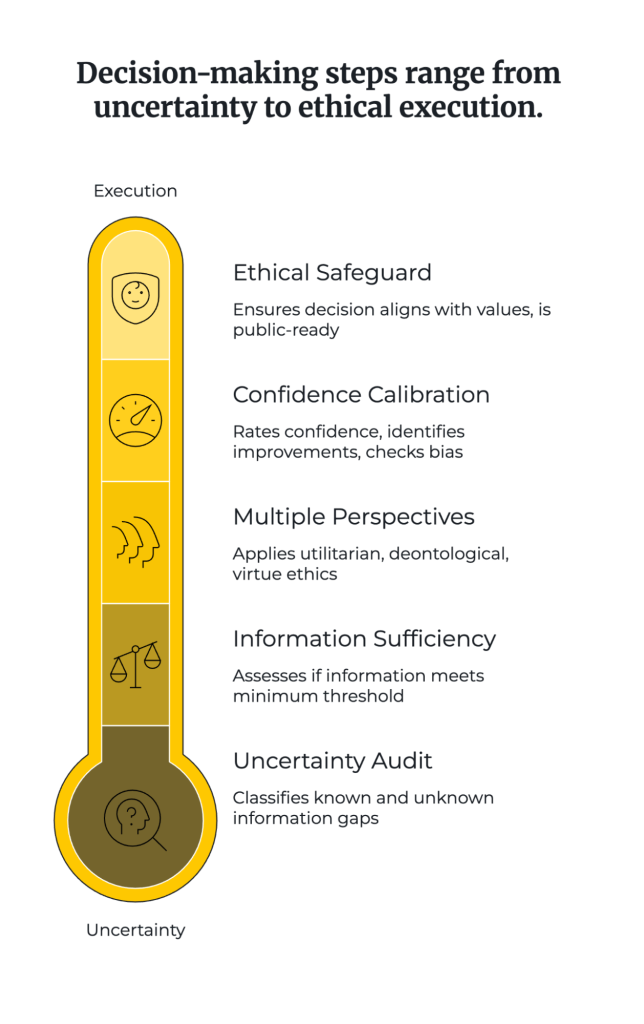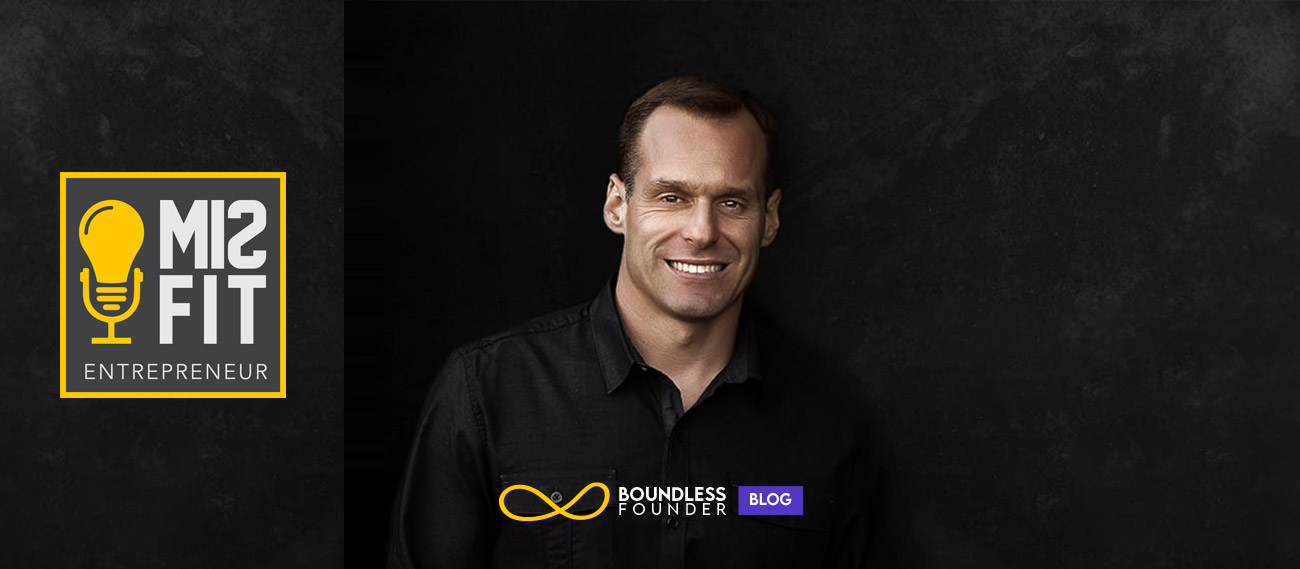The $65,000 Decision That Changed Everything
The email hit my inbox like a freight train. AWS had just sent me a bill for $65,000—money we’d burned through in just twenty days. My hands trembled as I stared at the number. We only had $75,000 left in our bank account.
In that moment, every decision-making framework I’d learned in business school evaporated. The irony wasn’t lost on me: our product was designed to help companies save on cloud infrastructure costs, yet here I was, paralyzed by our own catastrophic overspending. For three weeks, I couldn’t make a single clear decision. My mind was trapped in what I now call the thoughts-emotions loop—a mental prison that nearly destroyed my startup.
The Hidden Crisis Every Entrepreneur Faces
Decision-making under uncertainty isn’t just challenging—it’s the defining struggle of entrepreneurship. Unlike corporate executives who operate with established playbooks and historical data, entrepreneurs must make critical choices in information vacuums, where traditional business wisdom often fails to apply.
Research on novice entrepreneurs reveals that startup founders face unique decision-making challenges involving reasoning logic, exploring external knowledge, and managing impulsiveness. The study found that lack of financial resources notably increases uncertainty levels, forcing entrepreneurs to pursue the fastest funding options rather than optimal ones—a pattern I lived through personally.
The real danger isn’t the uncertainty itself—it’s how our minds respond to it. When faced with ambiguous situations, entrepreneurs often experience decision paralysis, emotional hijacking, or worse, make reactive choices that compound their problems. This is where having the right frameworks and resources becomes not just helpful, but essential for survival.
Breaking Free: The Frameworks That Save Startups
After years of struggling with decision-making under pressure, I discovered that the best business books for entrepreneurs aren’t just theory—they’re lifelines. Ben Horowitz’s “The Hard Thing About Hard Things” became my bible during crisis moments. Horowitz’s brutal honesty about the reality that “there’s no recipe for building a high-tech company” validated my experience while providing practical wisdom for navigating the unknown.
But it was combining multiple frameworks that truly transformed my decision-making. The Heath brothers’ WRAP process from “Decisive”—Widen your options, Reality-test your assumptions, Attain distance before deciding, and Prepare to be wrong—became my antidote to cognitive biases that had plagued my early decisions.
Understanding Daniel Kahneman’s dual-system thinking from “Thinking, Fast and Slow” helped me recognize when my fast, intuitive System 1 was hijacking decisions that required slower, more deliberative System 2 thinking. This awareness alone prevented countless reactive mistakes during high-pressure moments.
My Framework Evolution: From Paralysis to Power
Let me take you back to that AWS crisis. After three weeks of paralysis, something shifted. I realized I was letting my emotions—fear, shame, embarrassment—drive my thinking. Using techniques I’d learned but never truly applied, I began breaking the thoughts-emotions loop.
First, I acknowledged the pattern: each negative thought (“We’re going to fail”) created a stronger emotion (panic), which generated more catastrophic thoughts. It was a mental whirlpool pulling me deeper. Then I applied what I now call the 3R Decision Framework:
Recognize: I identified that I was in an emotional decision state, not a rational one. The $65,000 bill was a fact, but “we’re doomed” was an interpretation.
Reframe: Instead of seeing it as a company-ending crisis, I reframed it as a solvable problem. Other startups had survived worse. This wasn’t unique or insurmountable.
Respond: With emotional distance achieved, I could finally think strategically. I negotiated a six-month payment plan with AWS, secured $100,000 in Google Cloud credits, and orchestrated a complete infrastructure migration in under 20 days.
This experience taught me that ethical decision-making frameworks for startups aren’t just about choosing between right and wrong—they’re about maintaining your values and judgment when everything feels like it’s falling apart.
Your Decision-Making Toolkit: Practical Application Steps
Based on my journey and research into decision-making under uncertainty, here’s a practical framework for making better decisions when information is limited:
1. The Uncertainty Audit
Before making any decision, classify your uncertainty:
- Known unknowns: What specific information are you missing?
- Unknown unknowns: What might you not even know to consider?
- Time-sensitive vs. reversible: Can this decision be changed later?
2. The Multiple Perspectives Protocol
- Apply the utilitarian lens: What creates the most good for the most stakeholders?
- Use the deontological check: Does this align with your core principles?
- Consider the virtue ethics question: Will this decision help you become the leader you want to be?
3. The Information Sufficiency Test
Drawing from “The Decision Book: Fifty Models for Strategic Thinking”, ask:
- Do I have 40% of the information needed? (Minimum threshold for most decisions)
- Will waiting for more information fundamentally change the decision?
- What’s the cost of delay versus the cost of being wrong?
4. The Confidence Calibration Method
- Rate your confidence level (1-10) in the decision
- If below 6, identify what would increase it
- If above 8, check for overconfidence bias
- Document your reasoning for future learning
5. The Ethical Safeguard Check
Before executing any decision, ensure it passes these ethical frameworks for startups:
- Would I be comfortable if this decision was public?
- Does it align with our stated values?
- Am I rationalizing or genuinely reasoning?

The Transformation: From Reactive to Responsive
Implementing these frameworks doesn’t just improve individual decisions—it fundamentally transforms how you lead. When I started using structured decision-making approaches, I noticed profound changes:
Faster recovery from setbacks: What once paralyzed me for weeks now takes hours or days to process and address. The emotional intensity remains, but it no longer controls my actions.
Increased team confidence: When your team sees you making thoughtful decisions under pressure, their trust deepens. They learn to model the same approaches.
Better pattern recognition: Each documented decision becomes a learning opportunity. I can now spot similar situations earlier and apply proven frameworks faster.
Reduced decision fatigue: Having a process eliminates the exhausting “how should I think about this?” phase, preserving mental energy for actual problem-solving.
Most importantly, these frameworks create what I call “confident uncertainty”—the ability to move forward decisively even when you don’t have all the answers.
Your Next Step: Building Your Decision Arsenal
The journey from decision paralysis to confident uncertainty starts with a single step. Begin by downloading our “Entrepreneurial Decision-Making Toolkit”, which includes templates for the 3R Framework, ethical decision audits, and a curated reading list of the best business books for entrepreneurs facing uncertainty.
For those ready to dive deeper, “The Inside-Out Entrepreneur” expands on these frameworks with additional case studies and advanced techniques for maintaining mental clarity during your most challenging moments. Get your copy here and join thousands of founders who’ve transformed their decision-making under pressure.
Diagnostic Element: Your Decision-Making Health Check
Rate yourself on these statements (1 = Never, 5 = Always):
- I can identify when emotions are driving my decisions
- I have a consistent process for evaluating options
- I consider multiple ethical perspectives before acting
- I document decisions and reasoning for future learning
- I maintain confidence even with incomplete information
Scoring:
- 20-25: You have strong decision-making foundations
- 15-19: You’re developing good practices but have room to grow
- Below 15: These frameworks could significantly improve your outcomes











Responses